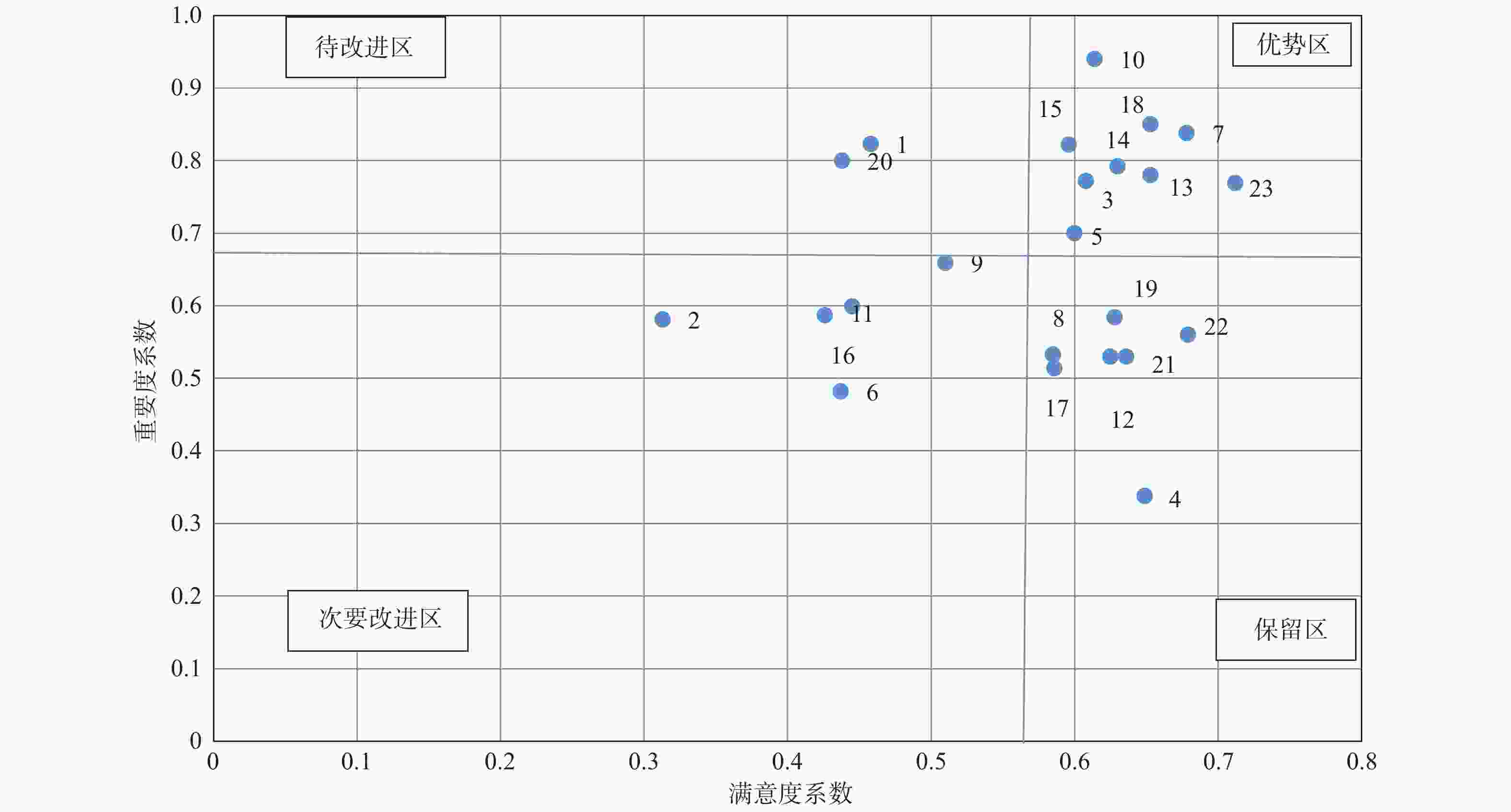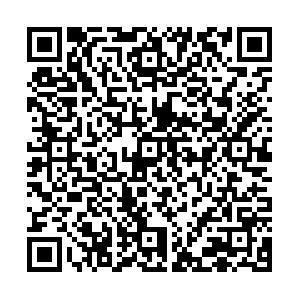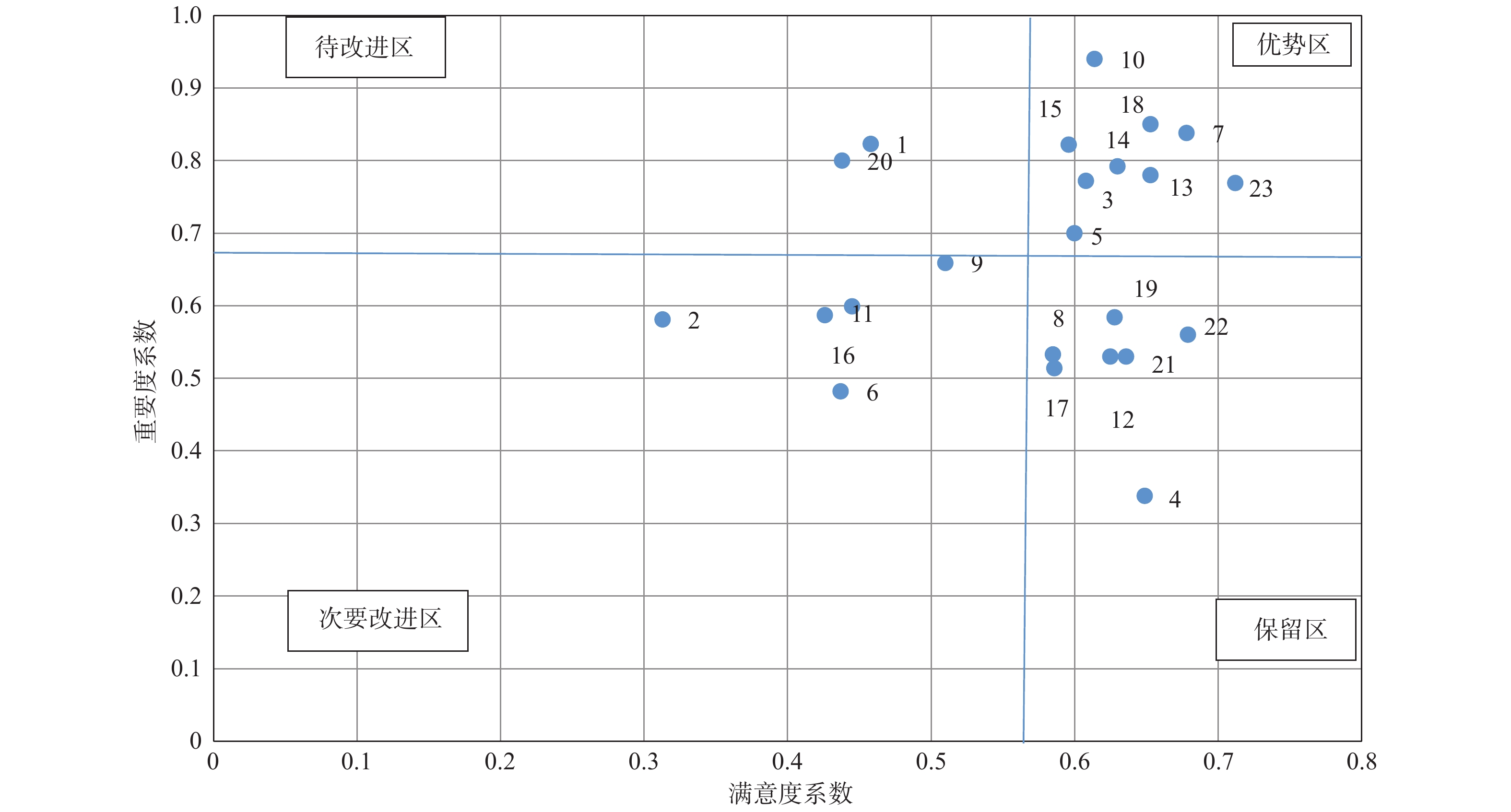Needs Assessment of Health Education for Dysphagia in Nasopharyngeal Carcinoma Radiotherapy Patients Based on KANO Model
-
摘要:
目的 用KANO模型对鼻咽癌放疗患者的吞咽困难健康教育需求进行定性分析,为临床优化健康教育策略提供依据。 方法 基于KANO模型设计鼻咽癌放疗患者吞咽困难知识需求的调查问卷,采用整群抽样法,选取2021年9月至2021年12月某三甲肿瘤专科医院放射治疗科收治的160例鼻咽癌放疗患者为研究对象进行调查。 结果 在鼻咽癌放疗患者吞咽困难健康教育需求的23个条目中,必备型需求6个(26.08%),期望型需求9个(39.13%),魅力型需求7 个(30.43%),无差异型需求1个(4.34%),重要度-满意度矩阵图中,2个(8.67%)条目位于待改进区,5个(21.73%)条目位于次要改进区。 结论 KANO模型可用于鼻咽癌放疗患者的健康教育需求调查,使用后能充分全面的了解了患者的需求,并为提升患者对于健康教育的满意度提供依据。 Abstract:Objective To qualitatively analyze the needs of health education for dysphagia in nasopharyngeal carcinoma patients undergoing radiotherapy by using KANO model, and provide the basis for optimizing the health education. Methods Based on the KANO model, a questionnaire was designed to investigate the knowledge needs of nasopharyngeal carcinoma radiotherapy patients on dysphagia. Cluster sampling method was used to investigate 160 patients with nasopharyngeal carcinoma treated in radiotherapy department of a third-class cancer hospital from September 2021 to December 2021. Results Among the 23 items of health education needs of nasopharyngeal carcinoma patients with dysphagia after radiotherapy, 6 items are necessary (26.08%), 9 items are expected (39.13%), 7 items are attractive (30.43%) and 1 item is undifferentiated (4.34%).In the importance-satisfaction matrix, 2 items (8.67%) are located in the area for improvement, and 5 items (21.73%) are located in the area for minor improvement. Conclusion The KANO model can be used in the neeeds assessment of health education of patients with nasopharyngeal carcinoma radiotherapy demand investigation, which helps us to fully and comprehensively understand the needs of patients and to improve the satisfaction of patients with health education. -
Key words:
- Nasopharyngeal carcinoma /
- Radiotherapy /
- Dysphagia /
- KANO model /
- Health education needs
-
表 1 KANO问卷中正反向成对问题举例
Table 1. Examples of positive and negative paired questions in KANO questionnaire
如果向你提供什么
服务,您觉得如果不能向你提供
什么服务,您觉得喜欢 喜欢 理当如此 理当如此 无所谓 无所谓 能忍受 能忍受 不喜欢 不喜欢 表 2 KANO模型需求属性分类表
Table 2. KANO model demand attribute classification table
正向问题反向问题 喜欢 理当如此 无所谓 能忍受 不喜欢 喜欢 Q R R R R 理当如此 A I I I R 无所谓 A I I I R 能忍受 A I I I R 不喜欢 O M M M Q 表 3 鼻咽癌放疗患者吞咽困难健康教育需求KANO属性结果汇总
Table 3. Summary of KANO Attribute Results of Health Education Needs for Dysphagia in Patients with Nasopharyngeal Carcinoma Treated by Radiotherapy
维度 序号 项目 A O M I R Q 属性 SI系数 DSI系数 健康教育方式 1 举办健康讲座 16 55 73 11 1 0 M 0.458 0.823 2 发放健康教育资料 28 20 70 37 1 0 M 0.313 0.581 3 电话咨询 19 75 45 16 1 0 O 0.608 0.772 4 一对一健康指导 90 11 41 13 1 0 A 0.649 0.338 5 病友交流 33 31 39 23 1 1 O 0.60 0.7 6 移动平台 36 30 20 68 1 1 I 0.437 0.482 吞咽困难知识 7 吞咽困难发病原因 14 80 50 11 1 0 O 0.678 0.838 8 吞咽困难的危害 54 36 46 19 1 0 A 0.585 0.533 9 吞咽困难的症状 47 31 71 6 1 0 M 0.51 0.659 10 吞咽困难的预防 4 91 55 5 1 0 O 0.614 0.94 11 吞咽困难的预防 47 19 72 17 1 0 M 0.426 0.587 12 吞咽困难的预后 59 39 43 14 1 0 A 0.636 0.53 13 吞咽困难的注意事项 17 85 37 17 0 0 O 0.653 0.78 吞咽困难筛查 14 筛查的目的 24 74 49 8 1 0 O 0.63 0.792 15 筛查时机 15 77 50 13 1 0 O 0.596 0.822 16 筛查的方法 51 18 74 11 1 1 M 0.445 0.599 17 筛查的注意事项 57 34 46 18 1 0 A 0.586 0.514 吞咽困难康复 18 康复锻炼适应症 20 82 50 4 1 0 O 0.653 0.85 19 康复锻炼注意事项 56 42 49 57 2 0 A 0.628 0.584 20 康复锻炼方法 19 45 76 15 1 0 M 0.438 0.8 21 饮食指导 52 45 38 20 1 1 A 0.625 0.53 22 心理指导 53 52 35 16 1 0 A 0.679 0.56 23 康复锻炼时机 29 81 38 8 0 0 O 0.712 0.769 -
[1] 梁锌,杨剑,高婷,等. 中国鼻咽癌流行概况[J]. 中国肿瘤,2016,25(11):835-840. doi: 10.11735/j.issn.1004-0242.2016.11.A001 [2] 康敏. 中国鼻咽癌放射治疗指南(2020版)[J]. 中华肿瘤防治杂志,2021,28(3):167-177. doi: 10.16073/j.cnki.cjcpt.2021.03.01 [3] Jiang L,Huang C,Gan Y,et al. Radiation-induced late dysphagia after intensity-modulated radiotherapy in nasopharyngeal carcinoma patients:A dose-volume effect analysis[J]. Sci Rep,2018,8(1):16396. doi: 10.1038/s41598-018-34803-y [4] 沈梅竹,龙国贤,孙伟,等. 鼻咽癌患者营养状态变化调查[J]. 内科急危重症杂志,2015,21(5):348-351. [5] 王恬,郝宏恕,韩光曙,等. Kano模型在我国护理管理中的应用分析[J]. 全科护理,2020,18(19):2352-2357. doi: 10.12104/j.issn.1674-4748.2020.19.013 [6] Tripathi S,Henrekin L L,Read C D,et al. Identification of critical to quality elements for intensive care rounds by kano analysis[J]. Pediatr Qual Saf,2017,2(4):027. [7] 董菁. Kano模型多维拓展方法及实证研究[D]. 镇江: 江苏科技大学硕士学位论文, 2019. [8] Chen W K,Chang J R,Chen L S,et al. Using refined kano model and decision trees to discover learners' needs for teaching videos[J]. Multimed Tools Appl,2022,81(6):1-31. [9] 赵宇柯,徐佳琪,何雨珊,等. 基于卡诺模型的PCI术后患者心脏康复信息需求的识别研究[J]. 中华现代护理杂志,2020,26(7):846-850. doi: 10.3760/cma.j.issn.1674-2907.2020.07.002 [10] Howsawi A A,Althageel M F,Mohaideen N K,et al. Application of the kano model to determine quality attributes of patient's care at the primary healthcare centers of the Ministry of Health in Saudi Arabia,2019[J]. J Family Community Med,2020,27(3):178-185. doi: 10.4103/jfcm.JFCM_92_20 [11] 付江瑜. 思维导图联合回授法对鼻咽癌放疗后患者吞咽功能、自护能力与生活质量的影响[J]. 护理实践与研究,2019,16(12):1-4. doi: 10.3969/j.issn.1672-9676.2019.12.001 [12] Mkpojiogu E O,Hashim N L. Understanding the relationship between Kano model's customer satisfaction scores and self-stated requirements importance[J]. Springerplus,2016,5(3):197. [13] 王欣,许辉琼,汪秀云. 规范化健康教育在肿瘤癌痛患者中的应用[J]. 检验医学与临床,2016,13(23):3428-3430. doi: 10.3969/j.issn.1672-9455.2016.23.061 [14] Chen M C,Hsu C L,Lee L H. Service Quality and customer satisfaction in pharmaceutical logistics:An analysis based on kano model and importance-satisfaction model[J]. Int J Environ Res Public Health,2019,16(21):4091. doi: 10.3390/ijerph16214091 [15] 孙予祥,贾雪丽,廖书帆,等. 吞咽康复对头颈癌患者吞咽功能及生活质量效果的Meta分析[J]. 中国康复理论与实践,2019,25(7):751-760. [16] 骆惠玉,林朝春,林云月,等. 志愿者参与健康教育在乳腺癌患者康复中的作用[J]. 中华护理杂志,2012,47(7):650-652. doi: 10.3761/j.issn.0254-1769.2012.07.027 [17] 展阳妮,王斌全,田俊,等. 阶梯式心理护理对头颈肿瘤患者焦虑抑郁和生活质量的影响[J]. 护理学杂志,2019,34(5):1-4. doi: 10.3870/j.issn.1001-4152.2019.05.001 -






 下载:
下载:


